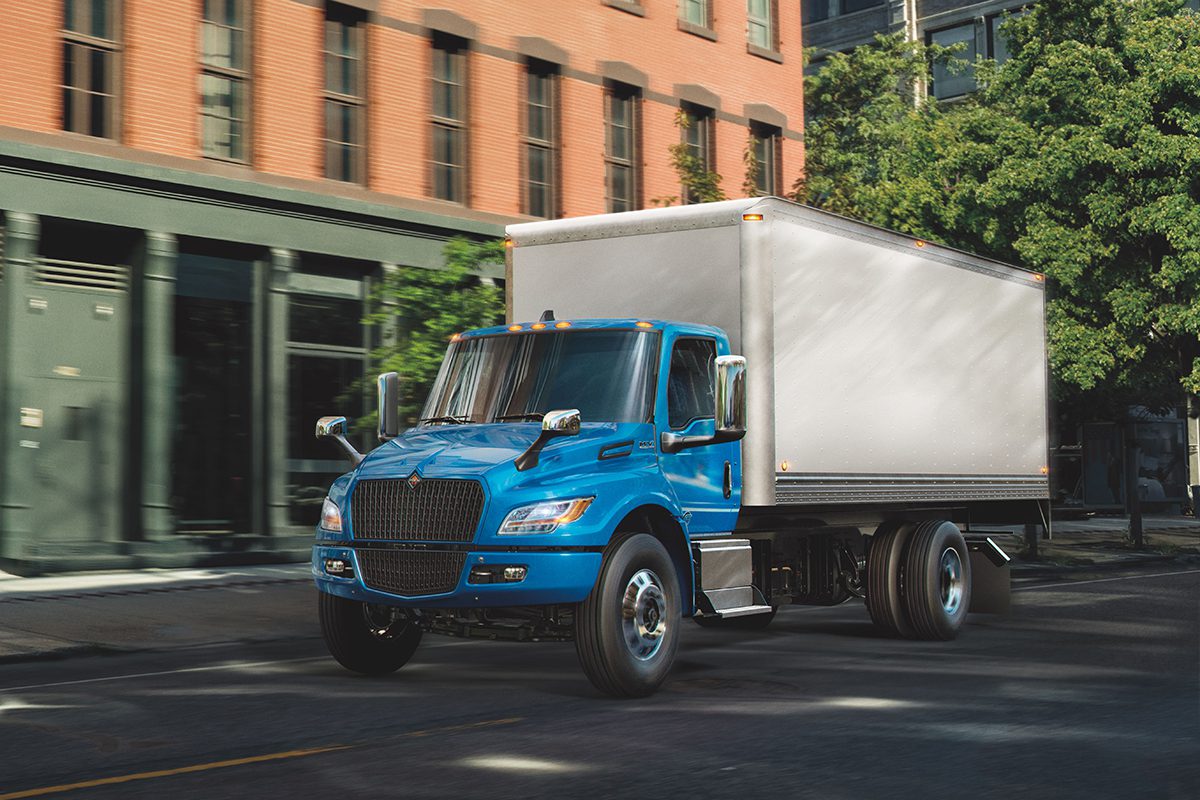The road to electrification for medium-duty (MD) box trucks can take several different paths. They can be built from the ground up on the production line; they can be upfitted, allowing a fleet to electrify a new vehicle that would otherwise be powered by a gasoline or diesel engine; or an existing vehicle can be remanufactured or repowered.
But whatever path they take, there is a strong use case for battery-electric trucks in the box truck segment of the MD truck market. While this segment is playing a big role in solving the last-mile delivery problem that was spawned by the growth of-commerce, MD box trucks are also seen in vocational applications, as well.
Today, there are battery-electric MD box trucks in production and operating across the U.S. and Canada. Fleets are getting real-world data that is helping them understand the total cost of operation (TCO).
The TCO discussion usually centers around the cost of the vehicle, the energy, and the maintenance, as well as sustainability. However, fleets probably need to start factoring the driver into the TCO equation. In the interviews NACFE conducted for its Guidance Reports on battery-electric vehicles and during the Run on Less – Electric (RoL-E) event, it became very clear that drivers love battery-electric vehicles. They say they are quieter and easier to driver. Having battery-electric MD trucks in a fleet could be a great driver attraction and retention tool.
Three of the 13 fleets that participated in RoL-E operated MD box trucks in a variety of applications. Day & Ross used a Lion Electric Lion 6 MD box equipped with a liftgate in local pickup and delivery applications of mixed freight in Montreal, Quebec, Canada. Frito-Lay delivered snack foods in a Cummins-Peterbilt Class 6 220EV to local grocery stores in Modesto, California. Roush Fenway Racing used a Roush CleanTech/Ford F-650 to haul racing car parts and promotional materials in Concord, North Carolina.
There are a number of advantages or benefits to operating battery-electric MD box trucks, but I would be naïve if I did not tell you that there also are challenges. Yet despite the challenges, we believe the box truck segment of the MD truck market is electrifiable, although some applications within the duty cycle will be easier to electrify than others that have more complex operations.
The reason NACFE thinks MD box trucks are a prime market for electrification is that the vast majority of these trucks are not driven long distances and are home every night. They are an ideal portion of the overall MD truck market for electrification — more specifically, standard MD box trucks and box trucks with lift gates on the freight side and stake trucks in the vocational part of the market.
Other MD applications that do not require much battery power to operate aspects of the body also can be good candidates for electrification. This includes box trucks with scissor lifts, refrigerated boxes, tankers, and sign trucks on the freight side — think dump trucks, bucket trucks, service bodies with hoists, and wrecker/roll-offs on the vocational side.
More complex Class 6 and 7 trucks such as frozen box trucks, snowplows, refuse trucks, fire trucks, and concrete mixers will require significant efforts to electrify, delaying their deployment. Trucks that see continuous operations for a day or more, such as a snowplow or utility truck, will be obvious challenges for battery-electric powertrains. We think some prototypes will be developed and tested, but they are less likely to be seen in significant volumes in the near future.
The use of battery-electric vehicles in some of the simpler use cases will be generating a great deal of new data that will help OEMs, fleets and battery producers develop and integrate more sophisticated interfaces and vehicles. Application expansion into more complex medium-duty trucks will occur as knowledge is gained. Tackling relatively simple and straightforward applications such as box trucks provides the trucking industry with a launching point to design, build, validate and refine battery electric trucks for the more complex applications in the MD market.
The industry will learn things such as how much of the battery’s power is consumed by various cab airconditioning and heating demands. It also will learn about how lift gates and other peripheral devices tax power consumption. This knowledge can be carried over to more difficult applications, providing a “known step” as they work through the issues in other more complex use cases.
Ultimately, it is likely this whole market segment will electrify. However, when the simpler box truck portion of this market segment electrifies — about 380,000 trucks in the U.S. and Canada — it will result in the avoidance of 7,681,707 metric tonnes of CO2e annually — reason enough for fleets to begin switching to battery-electrics when the need a MD box truck.



